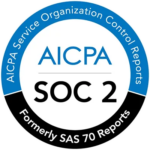The Top Types Of Freight Claims Every Shipper Should Know
1. Damage Claims
When to file:
When freight arrives visibly damaged, crushed, punctured, wet, repackaged, or otherwise compromised at delivery.
What it covers:
Physical damage caused by mishandling, improper loading, shifting during transit, or exposure to environmental conditions.
Documentation that maximizes your payout:
- Signed Delivery Receipt with Specific Damage Notes — Must be completed in the driver’s presence. Require the driver’s initials next to your notations. “Subject to inspection” is legally meaningless and should never be used.
- Bill of Lading (BoL) & Load Confirmation — Signed by the motor carrier to confirm shipment details and establish liability.
- Customer Invoice — Includes item numbers, descriptions, weights, and values for all damaged goods.
- Carrier Agreement & Insurance Certificate — Proves liability coverage and terms.
- Photos — Capture the freight as received: the trailer interior, packaging, and the damaged contents of the packaging. Retain goods and packaging until the carrier inspection is complete.
- All Related Communications — All emails with the carrier and Letters of Assignment must be included for transparency.
Pro Tip: The receiver/consignee should take photos before unloading and request the carrier’s inspection within 5 business days of delivery. If the carrier fails to inspect, your documented inspection—with photos—becomes the official record.
2. Shortage Claims
When to file:
When part of a shipment is missing at delivery either full packages or partial quantities.
What it covers:
Freight that was tendered to the carrier but not delivered in full to the consignee.
Documentation that maximizes your payout:
- Signed Delivery Receipt — Clearly note missing items or piece counts. Have the driver initial your notes.
- Bill of Lading & Load Confirmation — Verifies what was shipped and accepted by the carrier.
- Customer Invoice — Documents value and quantity for missing pieces.
- Carrier Agreement & Insurance Certificate — Establishes terms for carrier liability.
- Photos of Pallets at Loading/Unloading — Especially useful when product counts are in dispute.
- Communication Record — Notify the carrier immediately upon discovery. Most carriers require notice within 5–15 days of delivery.
Pro Tip: Create an internal check-in SOP to verify quantities immediately after unloading. Late shortage reporting is one of the top reasons for claim denial.
3. Loss Claims
When to file:
When an entire shipment, or part of it, never arrives and cannot be located.
What it covers:
Total or partial loss of freight in transit, often due to misrouting, theft, or carrier error.
Documentation to support your claim:
- BoL and Load Confirmation — Signed by the carrier to prove acceptance of freight.
- Proof of Non-Delivery — A statement from the carrier confirming the loss.
- Invoice & Proof of Payment — Establishes the shipment’s value.
- Carrier Communication Records — Show acknowledgment or investigation status.
- Police Report (if theft is suspected) — Recommended for high-value losses.
Pro Tip: File promptly. Do not wait for the carrier’s investigation to finish. The federal window for filing freight claims is within nine months of delivery or expected delivery.
4. Concealed Damage Claims
When to file:
When damage is discovered after delivery, typically during unpacking, without visible external signs at receipt.
What it covers:
Internal or hidden damage not apparent during delivery.
Documentation required:
- Original Delivery Receipt — Even if no damage was noted initially.
- Photos of Concealed Damage — Taken immediately upon discovery.
- Inspection Report or Carrier Notification — Must be requested immediately, and no later than 5 business days after delivery.
- Invoice and Packing Slip — To verify product value and item details.
- Retention of Goods and Packaging — Keep all materials as is from the moment the damage is discovered until the carrier completes inspection.
Pro Tip: Carriers can legally deny concealed damage claims filed after five days. Implement a policy requiring inspection within 24–48 hours of receipt to stay compliant.
Why Proper Documentation Is Everything
Regardless of claim type, documentation drives outcomes. Carriers deny incomplete claims, even with obvious damage, if required evidence is missing. Every freight claim should include:
- A signed and annotated delivery receipt
- Proof of carrier notification within required timeframes
Manual claim tracking leads to missing files, delayed inspections, and missed deadlines—costing companies millions annually.
FreightClaims.com eliminates that risk by automating documentation capture, timestamping every file, and centralizing all communication in one place. The result: fewer denials, faster settlements, and better visibility across every shipment.
Final Thoughts
Freight claims aren’t just about recovering losses – they’re about protecting your operational margins, customer relationships, and brand credibility.
By understanding which claim to file and backing it with airtight documentation, you dramatically improve recovery rates and reduce time-to-resolution.
Ready to streamline your claims process?
Schedule a demo today and see why leading shippers, brokers, and carriers choose FreightClaims.com.


